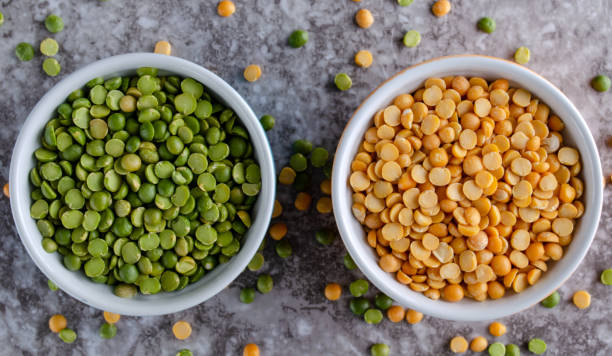Commonly mistaken as lentils, split peas are peas that grow in a pod from the plant. Their processing includes drying, removing them from their pods, and then being split in half, hence the name. On the other hand, lentils are the seeds of a small plant. Both offer great nutritional value. Split peas can be substituted for lentils in many recipes with only a slight texture difference and just an additional 5-10 minutes of cook time.
Split peas come in yellow and green varieties, but their nutritional value does not vary much. Many people describe yellow split peas as having a mild, earthy flavor while green split peas are sweeter.
Split peas are a good source of plant protein and fiber with just a half cup of cooked peas containing 8g of protein and 10g of fiber. This makes them a great addition to many recipes to help you to stay full for longer.
They also contain a good amount of minerals, including potassium, phosphorus, manganese, and copper. Potassium is an important electrolyte that helps your body maintain fluid balance while phosphorus, manganese, and copper help build your bones and muscles and keep your immune system strong.
How to Use Split Peas
One major benefit of using split peas is that they do not need to be soaked before cooking, unlike many other dried legumes including lentils. It is a good idea to rinse your split peas and check for any smaller, harder looking peas to be removed before cooking.
Split peas can be cooked in broth or water with a 3:1 liquid to split pea ratio. For split peas that hold their shape, cook for 20 minutes. To make a smooth puree, cook for 40 minutes or longer.
They can also be soaked for a few hours, dried, and cooked in a pan with some seasoning (try paprika, chili powder, garlic powder, and a sprinkle of salt) and oil to make a crispy snack.
Try this cheesy pasta recipe that uses split peas in an unexpected and creative way!
Written by:
Sabrina Smith
Dietetic Intern


